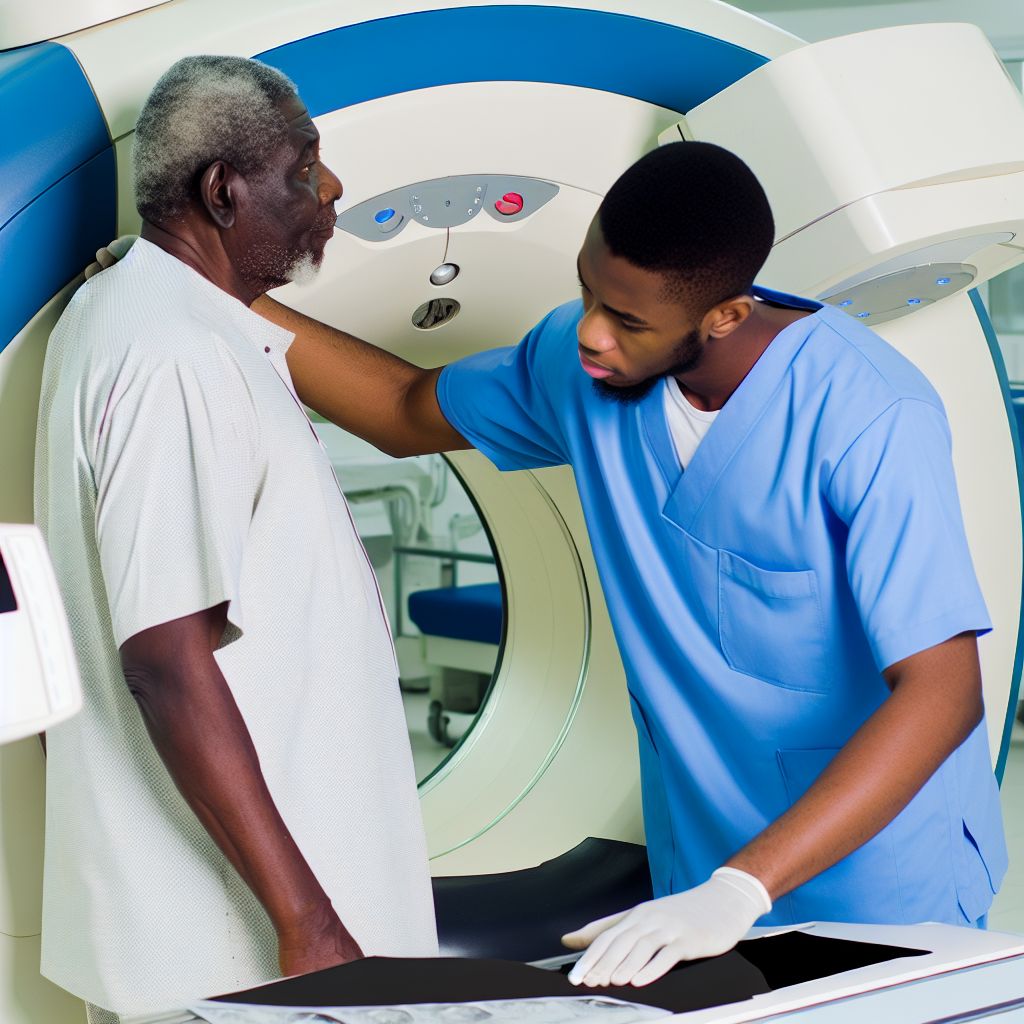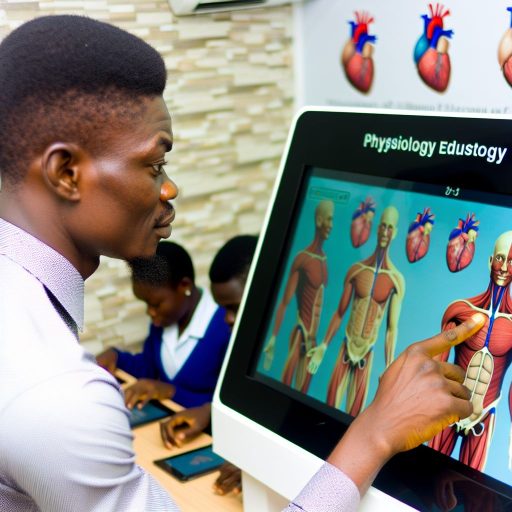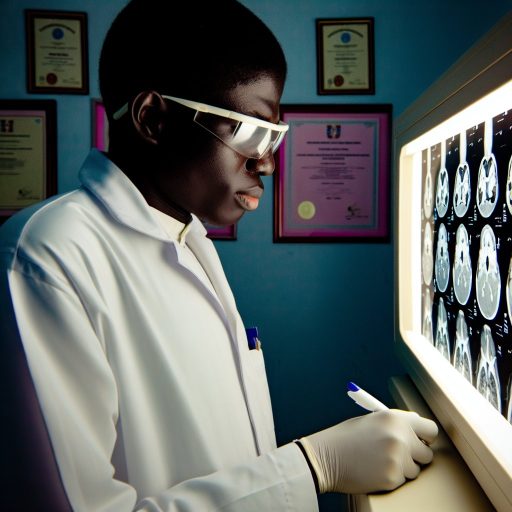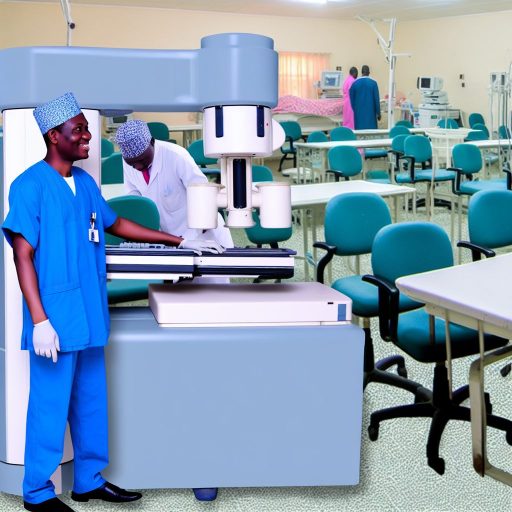Introduction
Radiographers play a crucial role in the healthcare system by performing diagnostic imaging procedures.
They are essential in medical diagnosis and treatment.
These healthcare professionals specialize in operating imaging equipment such as X-rays, CT scans, and MRIs to help diagnose various medical conditions.
By producing high-quality images of the internal structures of the body, radiographers assist doctors in accurately diagnosing illnesses and injuries.
They work closely with healthcare teams to ensure that patients receive the most effective and appropriate treatment based on their findings.
Without radiographers, doctors would have a challenging time identifying and treating conditions effectively, leading to potential delays in patient care.
Overall, radiographers are integral members of the healthcare workforce, contributing to improved patient outcomes and quality of care.
History and Evolution of Radiography in Nigeria
Radiography, as a field, has a rich history in Nigeria that dates back several decades.
The origins of radiography in the country can be traced to the early 20th century when the first X-ray machines were introduced.
These machines revolutionized the healthcare industry and paved the way for the growth of radiography as a profession.
Origins of Radiography in Nigeria
The practice of radiography in Nigeria can be credited to the pioneering efforts of a few dedicated individuals who saw the potential of using X-ray technology for medical purposes.
One of the early adopters of radiography in Nigeria was Dr. James Watson, who is considered the father of radiography in the country.
Dr. Watson, a British medical doctor, introduced X-ray machines to Nigeria in the early 1920s, using them to diagnose various medical conditions.
His work laid the foundation for the establishment of radiography as a profession in Nigeria and inspired many young Nigerians to pursue careers in this field.
Key Moments in the Development of Radiography
Over the years, radiography in Nigeria has undergone significant development, marked by several key moments that have shaped the profession.
One of the most notable milestones was the establishment of the first radiography training program in the country.
- The establishment of the School of Radiography at the University College Hospital, Ibadan, in the 1950s marked a major milestone in the development of radiography education in Nigeria.
- This training program provided aspiring radiographers with the necessary skills and knowledge to practice in the field, laying the groundwork for the professionalization of radiography in the country.
- As more healthcare institutions began to recognize the importance of radiography in medical diagnosis and treatment, the demand for radiographers increased, leading to the expansion of training programs across the country.
- In the 1980s, the Nigerian government took steps to regulate the practice of radiography by establishing the Radiographers Registration Board of Nigeria (RRBN), which set standards for training and certification in the field.
Today, radiography continues to play a critical role in the Nigerian healthcare system, with radiographers working in hospitals, clinics, and diagnostic centers across the country.
Their expertise in using imaging technology to diagnose and treat medical conditions has made them indispensable members of the healthcare team, contributing to improved patient outcomes and overall quality of care.
The history and evolution of radiography in Nigeria reflect the growth and development of the healthcare industry in the country.
From its humble beginnings to its current status as a vital healthcare profession, radiography has come a long way in Nigeria and will continue to evolve as new technologies and advancements emerge in the field.
Training and education of radiographers in Nigeria:
Educational requirements to become a radiographer in Nigeria:
In Nigeria, to become a radiographer, one must first obtain a degree in Radiography from a recognized university.
The degree program typically lasts for four to five years and includes theoretical knowledge as well as practical training.
Prospective radiographers must complete a clinical internship program to gain hands-on experience in a healthcare setting.
Upon graduation, radiographers are required to register with the Radiographers Registration Board of Nigeria (RRBN) to practice legally.
Accreditation process for radiography programs in the country:
In Nigeria, radiography programs undergo a rigorous accreditation process to ensure they meet the required standards.
The National Universities Commission (NUC) is responsible for accrediting radiography programs in universities across the country.
Accreditation involves a thorough assessment of the curriculum, facilities, faculty qualifications, and clinical training opportunities.
Only programs that meet the NUC’s standards are granted accreditation, thereby ensuring quality education for future radiographers.
Explore Further: Difference Between Nursing and Nursing Science
Role of Radiographers in Diagnostic Imaging:
Radiographers play a crucial role in diagnostic imaging within healthcare settings.
They are highly trained professionals responsible for operating various imaging techniques to help diagnose and treat medical conditions.
Imaging Techniques Used by Radiographers:
- X-rays: Radiographers use x-rays to produce images of bones, tissues, and organs.
- CT Scans: Computed Tomography scans provide detailed cross-sectional images of the body.
- MRI: Magnetic Resonance Imaging uses magnetic fields to create detailed images of the body.
- Ultrasound: Radiographers perform ultrasound scans to visualize internal organs and monitor fetal development.
- Fluoroscopy: This technique involves real-time imaging to observe a patient’s internal structures in motion.
Collaboration with Healthcare Professionals:
Radiographers work closely with other healthcare professionals to ensure accurate diagnosis and treatment for patients.
They collaborate with radiologists, physicians, and nurses to provide comprehensive care.
One of the key aspects of their role is to communicate effectively with the clinical team to discuss imaging findings and determine the best course of action for the patient.
Radiographers also play a vital role in educating patients about the imaging procedures, helping them understand what to expect and addressing any concerns they may have.
Moreover, they work together with radiation therapists, oncologists, and surgeons to plan and deliver treatments for conditions such as cancer, ensuring precision and effectiveness in therapy.
Radiographers serve as critical members of the healthcare team, utilizing their expertise in diagnostic imaging to contribute to accurate diagnosis, treatment, and patient care.
Uncover the Details: Scholarships for Nutrition and Dietetics Students Nigeria
Importance of Radiation Safety in Radiography
Prevent harmful effects of radiation on patients and radiographers.
Ensure accurate and safe diagnostic imaging.
Transform Your Career with Expert Guidance
Get personalized mentorship consulting that’s tailored to your unique path. Our expert advice is actionable and exclusive.
Get StartedComply with ethical and professional standards in healthcare.
Maintain a safe working environment for everyone involved.
Minimize the risk of radiation exposure to a minimum.
Radiation safety practices not only protect patients from unnecessary exposure but also safeguard radiographers from the harmful effects of prolonged radiation exposure.
It is crucial for radiographers in Nigeria to prioritize radiation safety in their daily practice.
Regulations and Guidelines for Radiographers in Nigeria
- National Radiological Protection Board guidelines
- Nigerian Institute of Radiography regulations
- International Atomic Energy Agency recommendations
- World Health Organization standards
- Health and Safety Executive guidelines
Radiographers in Nigeria must follow strict regulations and guidelines set forth by national and international organizations to ensure radiation safety in radiography.
These regulations outline key practices and protocols that radiographers must implement in their daily work to protect both themselves and their patients.
By adhering to radiation safety practices and following established regulations and guidelines, radiographers in Nigeria can effectively fulfill their role in providing high-quality diagnostic imaging services while prioritizing the well-being and safety of all individuals involved.
Uncover the Details: Advancements in Oral Biology Research in Nigeria

Understanding the Role of Radiographers in Nigerian Healthcare
Challenges faced by radiographers in Nigeria:
- Limited resources and equipment in healthcare facilities
- Need for continued professional development and training
Radiographers in Nigeria face numerous challenges in their daily practice.
These challenges impact both patient care and professional growth.
A lack of resources and equipment in healthcare facilities is a primary issue.
This scarcity hinders their ability to provide quality diagnostic imaging services.
Additionally, the need for continued professional development and training is essential.
Radiographers must keep up with advancements in technology and best practices in the field.
Limited resources and equipment in healthcare facilities:
One of the major challenges faced by radiographers in Nigeria is the shortage of essential resources.
This shortage significantly affects the quality of diagnostic imaging services provided to patients.
It leads to delayed diagnoses and substandard treatment.
Inadequate access to imaging modalities such as MRI machines and CT scanners hampers radiographers’ ability.
They struggle to accurately interpret medical images and deliver timely results to healthcare providers.
Moreover, the lack of essential supplies poses a significant risk to both patients and radiographers.
This includes contrast agents, protective gear, and quality control tools.
Without proper resources, radiographers struggle to maintain a safe and sterile environment.
Conducting imaging procedures becomes more challenging, leading to increased likelihood of errors.
This compromises patient safety.
Addressing the issue of limited resources requires collaborative efforts.
Government agencies, healthcare institutions, and industry partners must work together.
Adequate funding and infrastructure development are essential.
Equipment maintenance also plays a critical role.
All these measures ensure that radiographers have access to necessary tools.
They can then deliver high-quality diagnostic imaging services to patients across Nigeria.
Need for continued professional development and training:
Another significant challenge facing radiographers in Nigeria is the need for ongoing professional development.
As medical imaging technology evolves rapidly, radiographers must stay informed.
They need to keep abreast of the latest advancements and best practices in the field.
However, limited opportunities for ongoing training and growth hinder their ability.
Continuous education and training programs are essential for acquiring new skills.
Radiographers must update their knowledge to improve clinical practice.
Advanced training is crucial in specific areas like radiation safety and image interpretation.
This training enables them to deliver accurate and reliable diagnostic results.
Ongoing professional development helps them stay current with regulatory changes.
It also ensures adherence to ethical standards and quality assurance protocols.
Collaboration between regulatory bodies and educational institutions is vital.
Stakeholders must support radiographers’ professional growth in Nigeria.
Investing in continuous education empowers them to enhance their competence.
Ultimately, this advancement expands their scope of practice in diagnostic imaging.
Explore Further: Scholarships for Medical Biochemistry Students Nigeria
Advocacy and Recognition of Radiographers in Healthcare:
Efforts to raise awareness about the crucial role of radiographers in healthcare:
- Radiographers play a vital role in diagnosing and treating medical conditions.
- Advocacy campaigns can highlight the importance of their contribution to patient care.
- Educational programs can educate the public about the specialized skills of radiographers.
- Collaboration with healthcare providers can emphasize the value of radiographers in the healthcare system.
Initiatives to promote the professional recognition and advancement of radiographers in Nigeria:
- Professional organizations can advocate for the recognition of radiographers as key members of the healthcare team.
- Certification programs can ensure that radiographers meet industry standards and requirements.
- Ongoing professional development opportunities can enhance the skills and knowledge of radiographers.
- Mentorship programs can support the career growth and advancement of radiographers in the field.
Advocacy and recognition are essential for ensuring that radiographers receive the respect and support they deserve in the healthcare setting.
By raising awareness about their critical role and promoting their professional development, we can strengthen the healthcare system in Nigeria and enhance patient care outcomes.
Significance of Radiographers in Nigeria’s Healthcare
Radiographers play a crucial role in the Nigerian healthcare system.
Their expertise in diagnostic imaging and radiation therapy is essential for accurate patient diagnosis.
They contribute to improved patient outcomes and overall healthcare delivery.
With their skills and knowledge, radiographers help detect and diagnose various medical conditions.
This enables timely intervention and management of health issues.
Their role in ensuring patient safety during imaging procedures cannot be overstated.
Radiographers collaborate closely with other healthcare professionals.
This teamwork provides comprehensive and coordinated care to patients.
Such collaboration contributes to better treatment outcomes.
It enhances the overall quality of healthcare services in Nigeria.
Radiographers are indispensable members of the healthcare team.
Their contributions are vital to advancing the quality of healthcare in Nigeria.
Continued support and recognition of their role are essential for improvement.
These efforts enhance patient care and the healthcare system as a whole.
Additional Resources
Evidence based medical imaging practice in Nigeria: A paradigm or …
Patients’ reaction to the ethical conduct of radiographers and staff …




